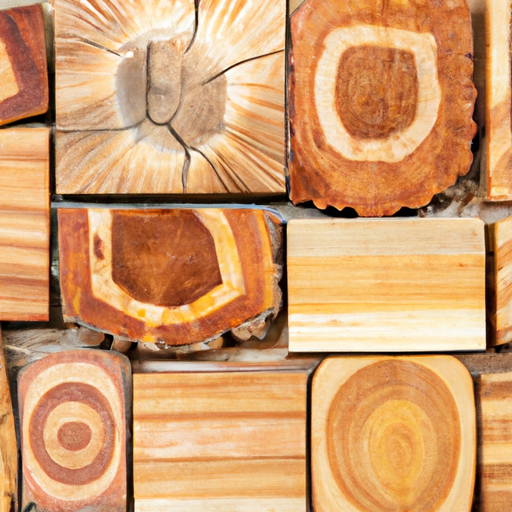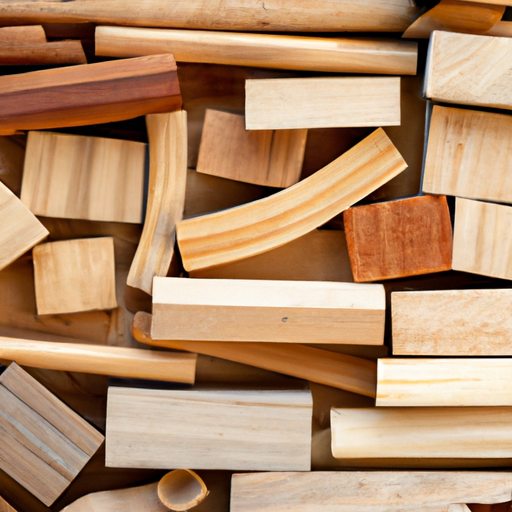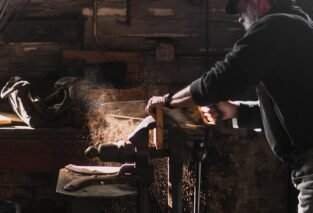In this article, you will discover various eco-friendly and sustainable woodworking practices that you can implement in your projects. We will explore techniques and materials that minimize waste, reduce carbon footprint, and promote responsible sourcing. Additionally, you will learn about the benefits of utilizing reclaimed and recycled wood, as well as choosing finishes and sealants that are non-toxic and environmentally friendly. By the end, you will have a better understanding of how to incorporate sustainable practices into your woodworking projects while still creating beautiful and functional pieces.
Introduction
Woodworking is a craft that has been practiced for centuries, but as the demand for wood products continues to rise, it is essential to consider the environmental impact of these practices. Fortunately, there are several eco-friendly and sustainable woodworking practices that can help preserve our precious natural resources while still allowing us to enjoy the beauty and functionality of wood. In this article, we will explore some of these practices, including choosing sustainable wood, minimizing waste, utilizing energy-efficient practices, reducing harmful chemicals, implementing proper ventilation, conserving water, promoting biodiversity conservation, and collaborating with sustainable suppliers.
Choosing Sustainable Wood
Certified Wood
When selecting wood for your woodworking projects, it is crucial to choose certified wood. Certification ensures that the wood has been responsibly sourced and harvested, taking into account social, environmental, and economic factors. The Forest Stewardship Council (FSC) is an international organization that sets standards for forest management, and their certification is highly regarded. Choosing FSC-certified wood supports sustainable forest management practices and helps protect forests worldwide.
Reclaimed Wood
Another eco-friendly wood option is reclaimed wood. Rather than using freshly cut timber, reclaimed wood refers to wood that has been salvaged from old buildings, barns, or other projects. Using reclaimed wood not only prevents perfectly usable wood from going to waste, but it also adds character and history to your woodworking projects. Look for suppliers or salvage yards that specialize in reclaimed wood, and you’ll be amazed at the unique and beautiful pieces you can find.
Bamboo as an Alternative Wood
Bamboo is a sustainable alternative to traditional wood. Unlike trees, bamboo is a fast-growing grass that can be harvested within a few years, making it an incredibly renewable resource. It is also known for its strength and durability, making it a suitable choice for various woodworking projects. By choosing bamboo instead of traditional wood, you can help reduce deforestation and support sustainable agricultural practices.

Minimizing Waste
Using Efficient Design Techniques
One of the essential steps in eco-friendly woodworking is using efficient design techniques. By carefully planning your projects, you can minimize waste and make the most of the materials you have. Taking accurate measurements, using computer-aided design (CAD) software, and considering the size and shape of your wood panels can help reduce the amount of scrap wood generated during the construction process.
Optimizing the Use of Raw Materials
In addition to efficient design techniques, optimizing the use of raw materials is another crucial aspect of sustainable woodworking. This can include nesting parts together to minimize waste, using cut-offs or scraps for smaller projects or accents, and finding creative ways to use odd-shaped or smaller pieces of wood. By being mindful of the materials you have and finding innovative ways to use them, you can significantly reduce waste and maximize the value of your wood resources.
Recycling and Upcycling
Another eco-friendly woodworking practice is recycling and upcycling. Instead of throwing away or discarding old or damaged wood, consider repurposing it for other projects. For example, broken furniture or pallets can be disassembled and used for smaller projects or as a source of unique reclaimed wood. By recycling and upcycling wood, you can give new life to materials that would have otherwise ended up in landfills, reducing waste and minimizing the demand for fresh wood.
Energy-Efficient Practices
Using Hand Tools
Using hand tools instead of power tools whenever possible can significantly reduce energy consumption in woodworking. Hand tools require no electricity and can be equally effective in many woodworking tasks. By embracing the traditional methods of woodworking, you not only save energy but also connect more intimately with the material and the craft.
Investing in Energy-Efficient Machinery
When power tools are necessary, investing in energy-efficient machinery can make a significant difference in reducing your carbon footprint. Look for power tools with high energy-efficiency ratings and opt for models with features such as automatic shut-off or variable speed controls to minimize unnecessary energy consumption. Additionally, consider purchasing tools with rechargeable batteries or using a solar panel setup to power your workshop, further decreasing your reliance on fossil fuels.
Utilizing Natural Lighting
Making use of natural lighting in your workshop can help reduce the need for artificial lighting, saving energy and reducing your environmental impact. Position your workbenches and tables near windows, skylights, or other sources of natural light to take advantage of daylight. Not only will this help reduce your electricity consumption, but it can also create a more pleasant and inviting workspace.

Reducing Harmful Chemicals
Avoiding Toxic Wood Preservatives
Many commercially available wood preservatives or treatments contain harmful chemicals that can have adverse effects on human health and the environment. Avoid using these toxic wood treatments and instead opt for environmentally friendly alternatives. Natural products such as linseed oil, beeswax, or tung oil can be used to protect and finish your wood projects without the associated health and environmental risks.
Choosing Non-Toxic Finishes
Similarly, when selecting finishes for your woodworking projects, choose non-toxic options. Many conventional wood finishes contain volatile organic compounds (VOCs) that can contribute to indoor air pollution and have detrimental effects on human health. Look for water-based or natural oil-based finishes that are low in VOCs and consider using local, eco-friendly brands that prioritize sustainability and health.
Using Natural Adhesives
Woodworking often involves the use of adhesives to join pieces together. However, many conventional adhesives, such as epoxy or polyurethane glue, contain harmful chemicals. Opt for natural adhesives, such as wood glue made from plant-based sources, or consider traditional joinery techniques that eliminate the need for adhesives altogether. Not only are natural adhesives better for your health and the environment, but they also ensure that your woodworking projects can be easily disassembled and recycled if needed.
Implementing Proper Ventilation
Ventilation Systems for Dust and Fumes
Woodworking generates dust and potentially harmful fumes, especially when cutting, sanding, or finishing wood. Implementing proper ventilation systems in your workshop is crucial to protect your health and maintain air quality. Install dust collection systems with high-efficiency particulate air (HEPA) filters to capture and contain the majority of the dust particles. Additionally, consider using local exhaust ventilation or fume extractors to remove potentially harmful gases and fumes generated during your woodworking processes.
Protecting Against Wood Dust Exposure
Wood dust exposure can pose significant health risks, including respiratory issues and certain types of cancer. It is essential to take measures to protect yourself against wood dust inhalation. Use personal protective equipment (PPE) such as dust masks or respirators, safety goggles, and gloves when working with wood. Regularly clean your workshop to remove accumulated dust and use vacuum systems equipped with HEPA filters to effectively capture fine wood particles.
Proper Disposal of Harmful Dust and Waste
Proper disposal of harmful dust and waste is a crucial part of eco-friendly woodworking. Regularly empty and dispose of dust collection systems in sealed bags or containers to prevent dust particles from getting back into the environment. If you have collected hazardous waste, such as finishes or adhesives, check with your local waste management facilities for guidance on how to safely dispose of them. By being mindful of and responsible for your waste disposal practices, you can prevent pollution and protect the environment.
Water Conservation
Implementing Water-Saving Practices
Conserving water in your woodworking processes can help reduce your water usage and overall environmental impact. Implement water-saving practices, such as using low-flow faucets or installing water-efficient equipment in your workshop. Turn off water when not in use, and avoid unnecessary water consumption during cleaning or finishing processes, where alternatives can be used instead.
Reusing and Treating Woodworking Wastewater
Instead of letting woodworking wastewater go to waste, consider reusing or treating it. For example, wastewater from cleaning brushes or equipment can be collected and used for watering plants or cleaning outdoor areas. Additionally, explore water treatment methods, such as settling tanks or filtration systems, to remove contaminants from woodworking wastewater before it is safely discharged or recycled.
Preventing Water Pollution
Preventing water pollution should be a top priority in eco-friendly woodworking practices. Ensure that hazardous chemicals, such as finishes or solvents, are not washed down drains or disposed of in water bodies. Use containment systems or spill kits to prevent accidental spills or leaks, and promptly clean and contain any spills that do occur to prevent contamination of nearby water sources. By being diligent in your water conservation and pollution prevention efforts, you can contribute to the health and preservation of our water ecosystems.
Promoting Biodiversity Conservation
Sourcing Locally and Sustainably
Supporting local wood suppliers who practice sustainable forestry is an effective way to promote biodiversity conservation. By sourcing wood locally, you reduce the carbon emissions associated with long-distance transportation and directly contribute to the local economy. Make sure to inquire about the sourcing practices of your suppliers and choose those who prioritize sustainable harvesting methods and forest conservation.
Protecting Endangered Wood Species
Some wood species are endangered or at risk of becoming extinct due to overharvesting. As a responsible woodworker, it is crucial to avoid using wood from endangered species. Familiarize yourself with the international agreements and regulations that protect endangered species, such as the Convention on International Trade in Endangered Species (CITES). Choose alternative wood species with similar characteristics and aesthetics to ensure the preservation of our natural biodiversity.
Supporting Forest Certification Programs
Forest certification programs, such as the Forest Stewardship Council (FSC), play a vital role in promoting sustainable forestry and biodiversity conservation. When purchasing wood, look for products labeled with the FSC certification to ensure that they come from responsibly managed forests. By supporting forest certification programs, you contribute to the protection of forests, wildlife habitats, and the communities that depend on them.
Collaborating with Sustainable Suppliers
Evaluating Suppliers’ Sustainability Practices
Collaborating with sustainable suppliers is crucial for eco-friendly woodworking. When choosing suppliers, evaluate their sustainability practices and policies. Inquire about their sourcing methods, waste management practices, and adherence to environmental regulations. Look for suppliers who prioritize sustainable and ethical practices, as their commitment to these principles aligns with your eco-friendly woodworking goals.
Supporting Forest Stewardship Council (FSC) Certified Suppliers
As mentioned earlier, the FSC is a respected certification organization for sustainable forestry practices. Supporting FSC certified suppliers not only encourages sustainable management of forests but also helps promote the demand for certified wood products, driving positive change throughout the industry. Look for suppliers that carry FSC certified wood products and prioritize doing business with them to support sustainable practices.
Seeking Eco-friendly Materials
In addition to sustainable wood, consider using eco-friendly materials for other components of your woodworking projects. From hardware and fasteners to finishes and adhesives, seek out alternatives that have minimal environmental impact. Research eco-friendly brands and explore innovative materials, such as recycled or biodegradable options, to minimize your ecological footprint.
Conclusion
By implementing eco-friendly and sustainable woodworking practices, you can enjoy the art and craft while minimizing the environmental impact. Choose certified wood or reclaimed wood, minimize waste through efficient design techniques and recycling, embrace energy-efficient practices, reduce harmful chemicals, implement proper ventilation, conserve water, promote biodiversity conservation, and collaborate with sustainable suppliers. By making conscious choices throughout your woodworking journey, you play a crucial role in preserving our natural resources for future generations. Embrace these practices, and let your woodworking projects become a testament to your commitment to sustainability and the environment.





